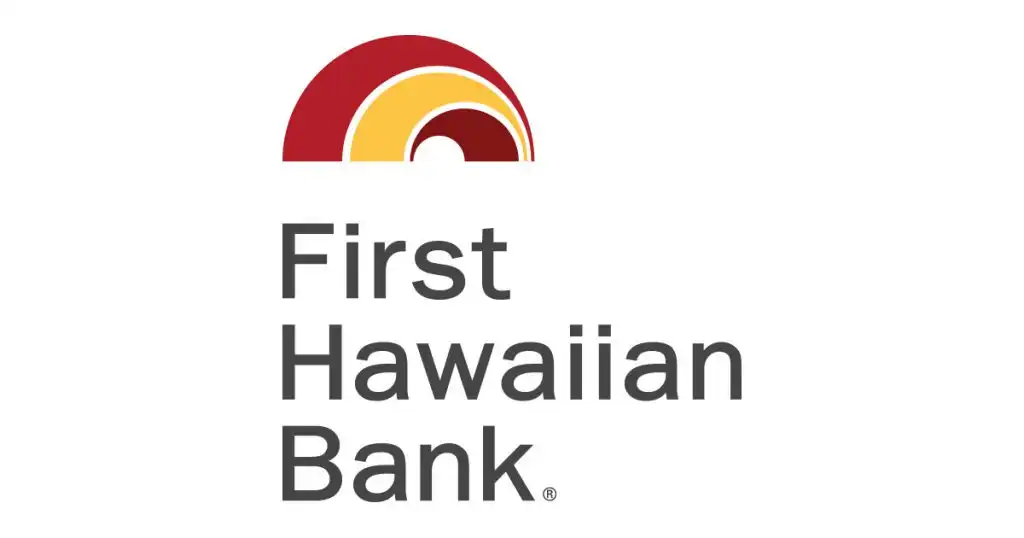UHERO analysis of vacation rental phase-out forecasts mixed results, widespread impacts

While Maui County’s proposed vacation rental phase-out in apartment-zoned districts could potentially unlock more than 6,000 transient vacation rental units for residential housing, the “bold attempt to rebalance Maui’s housing market” also risks widespread economic disruption, including 1,900 job layoffs and a $900 million loss in visitor spending, according to the University of Hawaiʻi Economic Research Organization.
“Our analysis finds that the policy would have far-reaching economic effects, with both intended benefits and unintended consequences,” UHERO says in its report, “An Economic Analysis of the Proposal to Phase Out Transient Vacation Rentals in Maui County Apartment Districts.”
This morning, UHERO released its highly anticipated study of the vacation rental phase-out, announced by Mayor Richard Bissen in early May 2024. The mayor’s announcement came in the wake of the August 2023 Maui wildfires that claimed at least 102 lives and destroyed more than 2,200 structures, mostly housing.
Last year, the vacation rental phase-out proposal has made its way through lengthy, tumultuous hearings before the Maui Planning Commission, and now is pending before the Maui County Council. The Council is expected to take up the measure after it completes this year’s annual review of the County budget. The Council has a June 18 deadline to take action.
The 25-page UHERO report takes an even-handed approach in laying out the proposal’s pros and cons. It basically looks at economic impacts before and after more than 6,000 vacation rental units — mostly in South and West Maui — are taken out of tourism and converted to long-term use, either as rentals or residential units occupied by owners.
“On the one hand, the potential conversion of up to 6,127 TVRs into long-term housing represents an increase in available housing stock equivalent to a decade’s worth of new development,” the study says. “This increased supply would improve housing affordability by lowering condo prices by 20 to 40% and by putting downward pressure on market rents.”
“On the other hand, the reduction in visitor accommodations is projected to decrease total visitor spending by $900 million annually, resulting in job losses and a contraction in household income and gross domestic product. Additionally, a decline in property values and economic activity would shrink county tax revenues, contributing to an estimated $75 million annual gap by 2029.”
In a news conference Monday morning, UHERO Executive Director Carl Bonham led a discussion of the report’s findings with reporters.
UHERO policy researcher Trey Gordner said: “There’s no such thing as a free lunch. There are always trade-offs associated with this sort of policy decision.”
“We find that the policy would increase housing affordability, somewhat, at the cost of jobs, incomes and tax revenues,” he said.
Maui’s economy is expected to contract by about 4% if the phase-out policy were implemented; “what we’re really talking about is a reduction in visitor accommodations; and leisure and hospitality employ about one in four workers in Maui County.”
Gordner said the UH economists used a computable general equilibrium model as a tool to analyze the economy-wide effects of the proposed vacation rental phase out policy. Unlike a partial equilibrium model that focuses on a single market, the computable general equilibrium model considers the interactions of all markets in an economy, their ripple-effect.
He simplified it by saying that the methodology models the entire economy of Maui County as a system of inter-related industries, which allows us to capture not only the direct effects on . . . . hotels, hotel prices and so forth, but also some indirect effects.”
So, the model can look at the policy’s effects on food services, banking, agriculture and so forth, he said.
The estimated loss of 1,900 jobs from the vacation rental phase-out would be equivalent to the number of jobs erased by the Lahaina wildfire disaster, Gordner said.
The UH economist assumed a recovery to pre-fire occupancy and an increase in prices of 15% as a result of decreased (visitor accommodations) supply, he said. “There’s inherent uncertainty associated with these projections.”
While the report presents other options or other possibilities and ranges, “this is what we think is the likeliest outcome,” Gordner said.
Condominium prices, which began falling late last year after several months of declining sales volume, are expected to drop about 25% after the addition of 6,000 units (a 13% increase) to the island’s housing inventory, he said. This outlook for lower prices would be for all condos, not only those on the so-called “Minatoya List,” of condominiums grandfathered as vacation rentals in apartment-zoned districts.
With condo prices expected to fall, the percentage of households that can afford a mortgage will increase, he said. But, even with the policy change, “it’s not as if lower-income households, for instance, could afford these units.”
The report has some limitations. For example, it doesn’t model any changes for single-family homes, even though there probably would be some, Gordner said. Also, the 25% estimate for lower prices is sensitive to assumptions around how fast housing units would be listed; and how fast they would be purchased.
The UHERO tax projections are based on projected changes in visitor accommodations and visitor spending, he said.
Regarding property taxes, the Maui County Council typically adjusts property tax rates and projected income to match the County’s annual expenses. In his presentation of his administration’s budget last week, Mayor Bissen said the proposed spending plan would keep real property tax rates flat across all categories, except for owner-occupied properties, where there would be a reduction to support local families.
Gordner said there’s also a cost of doing nothing.
“There’s a current situation of rent inflation,” he said. “Housing prices are rising. It’s not a static environment, and the increasing cost of living is causing people to leave Maui County, which will also have economic impacts related to a decrease in economic activity and jobs and workers and so forth.”
In a question-and-answer session, Bonham said the UH economists did not consider how units on the Minatoya List have only been able to operate legally in apartment-zoned districts because they’ve been grandfathered, or allowed to continue as a pre-existing use.
“Those are legal, political, social issues,” he said. “Our task is purely to look at what would the economic effects be of the policy. . . We’re looking at this from the perspective of pre-policy change to post-policy change, and what would it do to the economy, housing costs and all of the economic consequences.”
“Even if those units should absolutely never have been operated as TVRs, the fact is that they have been, right? And so the economic question of what happens when they’re no longer operated as TVRs is what we’re trying to address,” Bonham said.
The UHERO report addresses housing affordability for Maui residents, pointing out that the US Department of Housing and Urban Development considers a household cost-burdened if it spends more than 30% of its income on housing and severely cost-burdened if spending more than 50%.
The report cites the 2024 Hawai‘i Housing Factbook in saying that the majority of Maui County households were cost-burdened (53%) and 28% were severely cost-burdened before the 2023 wildfires. At that time, the typical homeowner in Maui County spent 27% of his or her income on housing costs, and the typical renter spent 32%.
For a family in Maui County earning the median family income, the cost burden thresholds in 2023 were $2,747 per month (30% of income) and $4,578 per month (50% of income), respectively. Based on the results of the M-CGE model reported above, these thresholds would decline by 9% nominally to $2,500 and $4,166 after the ban.
Still, could Maui families afford vacation rentals that suddenly appear on the housing market, either for sale or for rent?
The economists said that increasing housing supply generally lowers prices across the market. And, for residents displaced by the Lahaina wildfires, many were one- or two-person households that could, potentially, live in space-constrained former vacation rental units. Also, when more units become available, as could happen with vacation rental units, people who decide to move into them, leave their housing unit and make space available for someone else, the economists pointed out.
So, even if a household could not live in a former vacation rental unit, it could still benefit from improved overall housing affordability because residents can expect to see a broad reduction in housing prices because of the increase in supply.
Bonham said that about 20% of Maui’s housing stock is two-bedroom units, and about 8% is one-bedroom units. And, on the Minatoya List, almost 40% are two-bedroom units.
“There’s a lot of people on Maui already living in one- and two-bedroom condos,” he said.
The report’s key findings include:
Tourism Industry Impact
- Eliminating all TVRs in apartment zones could reduce visitor accommodations by 25% and visitor days by 32%.
- Total visitor spending is projected to decline by $900 million annually (-15%).
- The decline in spending also results in the loss of 1,900 jobs (-3% of total payroll jobs).
- Real gross domestic product could decline by 4%.
Housing Market Impact
- The policy could add up to 6,127 units to the long-term housing stock — a 13% increase, equivalent to a decade’s worth of new housing development.
- Condo prices are projected to decline by 20% to 40%, improving affordability but also reducing household wealth and property tax revenues.
- Affected TVRs are disproportionately owned by out-of-state investors (85%), but market-wide price declines also impact owner-occupants.
Tax Revenue Impact
- Property tax revenues could fall by up to $60 million annually by 2029 due to both changes in tax class and decreasing valuations.
- General excise tax and transient accommodations tax revenues are projected to fall by 10% and 8% respectively, totaling to an additional $14.8 million.
“This is a substantial policy intervention with wide-ranging implications for Maui’s economy,” Bonham said. “Our analysis shows that while the proposal could contribute to housing affordability, the resulting contraction in jobs, income and county revenues presents real tradeoffs that warrant careful consideration.”
The study acknowledges that expanding Maui’s housing supply, especially after the loss of housing in the August 2023 wildfires, “is a critical policy objective.” It calls the proposed intervention “unprecedented in scale worldwide.”
“Without reliable comparisons, predictions of exact economic outcomes are more uncertain,” the study says. “The magnitude of economic disruption depends on how quickly former TVRs transition into new uses, the extent to which displaced visitor demand is absorbed by remaining accommodations, and whether external economic conditions amplify or mitigate declines in home prices.”
The report also says that, “moreover, the benefits of lower home prices may not be evenly distributed.”
“Higher-income households may benefit from lower purchase prices, while lower-income renters may see only indirect benefits through the process of filtering — when new housing supply enables higher-income households to move into newly available units, thereby freeing up more affordable housing options for others further down the housing ladder.”
The report concludes by saying that “the proposed policy represents a bold attempt to rebalance Maui’s housing market. However, given the scale of the potential economic disruption, careful implementation, monitoring, and flexibility will be essential to maximize benefits while minimizing unintended harm.”
The UHERO analysts suggest that Maui County policymakers consider preparing a range of strategies to balance housing affordability with economic stability.
A range of options might include: “Policy alternatives such as higher property taxes on TVRs or an auction-based permit system could reduce short-term rental activity while generating revenue for affordable housing initiatives. If a full phase-out is pursued, phased implementation — such as sub-regional rollout or lottery-based selection — could smooth out economic disruptions.
The UHERO study also recommended “complementary policies” that could help former TVRs transition into long-term housing rather than for speculation or occasional use.
Suggested policies include:
- An empty homes tax to incentivize year-round occupancy.
- Rezoning and permitting reforms to support the redevelopment of aging properties and surrounding areas into higher-density, mixed-use communities.
- Homeownership assistance programs, such as down-payment support, deed restrictions and loan guarantees to expand housing opportunities for residents to purchase newly available units.
- Auctioning licenses for property owners to operate transient vacation rentals.
Gordner emphasized that the report was commissioned by the Hawaiʻi Community Foundation, and not Maui County government.
Editor’s note: This post has been updated from an earlier version to include comments from UHERO economists during a Monday morning press conference.









